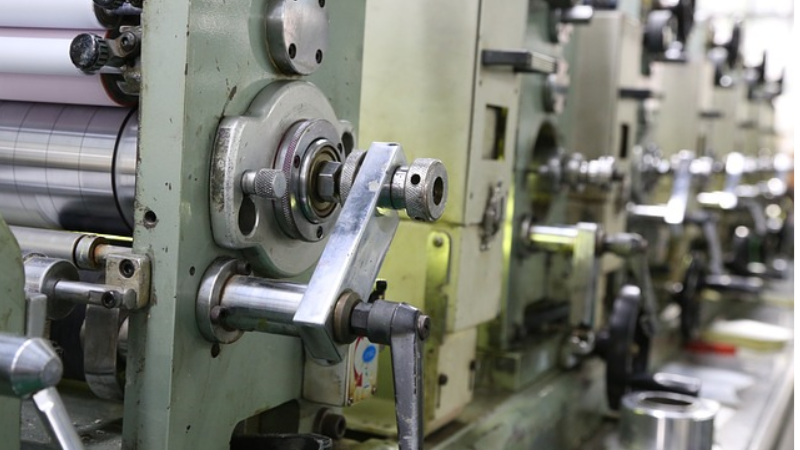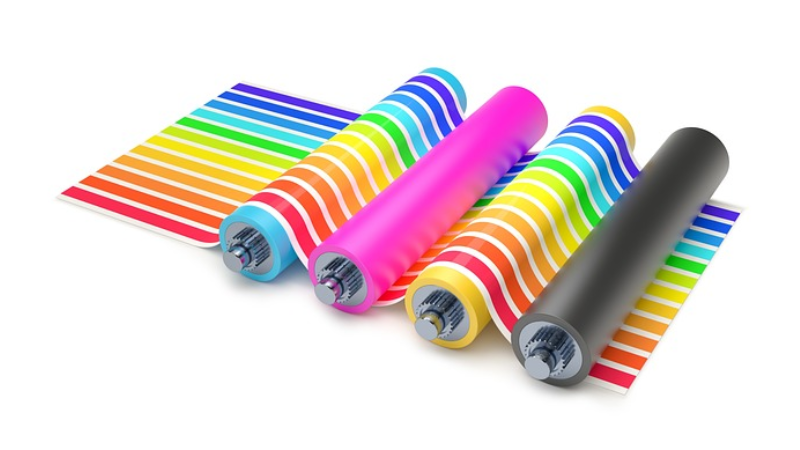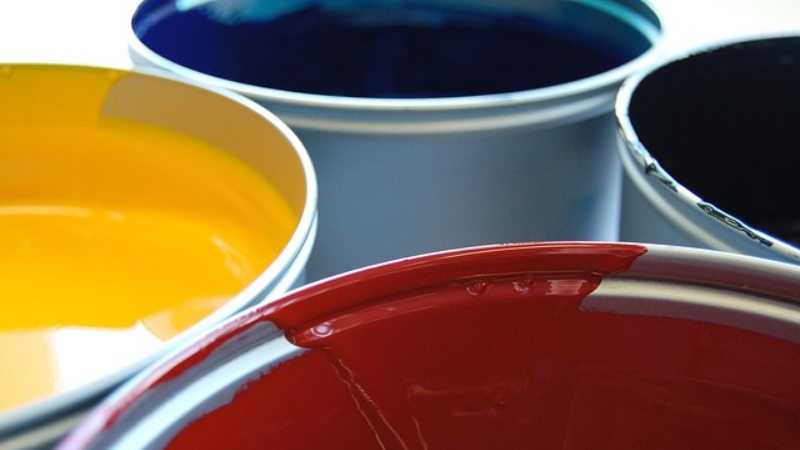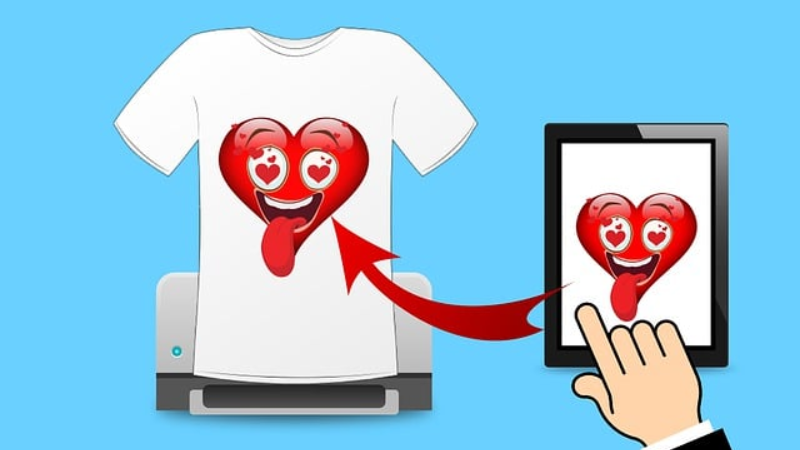Last Updated on May 23, 2023 by Packoi Team
Read on to learn more about the advantages of offset and screen printing works, the offset printing vs screen printing differences and their similarities, and disadvantages of both methods, and how to choose the best option for your next print job.
Printing technology has come a long way over the years. The printing industry has continued to evolve from traditional printing presses to modern digital printers. Two of the most popular printing techniques today are offset printing and screen printing.
Both are widely used in various industries but differ in their printing process, color options, production time, and cost. In this post, we will discuss the differences and similarities between offset printing and modern screen printing here, their advantages and disadvantages, and when to use each.
What is Offset Printing?

Offset printing, also known as full-screen printing and offset or lithography, is a printing technique that transfers ink from a printing plate to a rubber blanket onto the printing surface. The printing plate is made of aluminum or plastic, and the paper with the image printed is in liquid ink. Offset printing is commonly used on paper, cardstock, and other flat surfaces.
What is Screen Printing?
Screen printing is a printing technique that involves transferring ink through a stencil (or mesh stencil) onto a printing surface.
The stencil is made of a mesh material, such as silk or nylon, and has the design to be printed on it. Screen printing is a method commonly used for printing on various surfaces such as t-shirts, signage, and promotional products.
Differences between Offset Printing and Screen Printing
Color Options

Offset printing uses the CMYK color model, which stands for cyan, magenta, yellow, and black. This color model is used for full-color offset printing works and allows for printing a wide range of colors and shades.
On the other hand, screen printing uses spot colors, which are pre-mixed inks that produce specific colors. While screen printing can produce vibrant and bold colors, it cannot produce the same range of colors that offset printing can.
Production Time
Offset printing is a time-consuming process involving creating a plate and setting up the printing press. Once the press is set up, it can produce high-quality prints at a fast rate.
On the other hand, screen printing is a relatively quick process involving creating a stencil and setting up the screen printing press. Screen printing can produce high-quality prints than both offset and digital printing.
Cost
Offset printing is generally more expensive than screen or digital printing, especially for small print runs. The cost of using offset vs digital printing is mainly due to the setup costs involved in creating the printing plate and setting up the press. On the other hand, screen printing has lower setup costs, making it a more cost-effective option for small print runs.
Printing Process

Offset printing involves transferring ink from a printing plate to a rubber sheet or blanket and then onto the printing surface. This indirect printing process allows for high-quality prints with sharp and clean images.
Screen printing involves transferring ink through a stencil (or mesh) onto the printing surface. This direct printing process produces prints with a thicker ink layer, which can give a tactile and textured finish.
Similarities between Offset Printing and Screen Printing
Quality Output
Both offset printing and screen printing produce high-quality prints with sharp and clean images. The quality of the print output is largely dependent on the design and the quality of the offset and digital printing materials used.
Suitable for Printing on Different Surfaces:
Offset printing is suitable for printing on paper, cardstock, and other flat surfaces. On the other hand, screen printing can be used for printing on various surfaces such as t-shirts, signage, and promotional products.
Suitable for Large Quantity Prints:
Both offset printing techniques and screen-top printing processes are suitable for large-quantity prints. However, offset printing is more efficient for large print runs due to its fast production rate.
Offset Printing vs Screen Printing: Which One to Use

Printing is an essential aspect of business marketing and communication, and choosing the right printing method can make a significant difference in the success of your print job. Two of the most commonly used printing methods are offset printing and screen printing.
In this part, we will explore the main difference, advantages, and disadvantages of offset and screen printing and guide you to go to process through the factors to consider when choosing between them.
The Difference in Printing Surface
One of the most significant differences between offset printing and screen printing is the surface. They can print multiple intricate designs. Offset printing is most suitable for flat surfaces such as paper or cardboard. On the other hand, screen printing is more versatile and can be used on a variety of surfaces, including textiles, ceramics, and plastics.
Quantity of Prints: Which is More Cost-Effective?
Another significant factor to consider when choosing between offset printing and screen printing is the number of prints you need. Offset printing is more cost-effective for producing large quantities of prints, while screen printing is more cost-effective for small to medium quantities of prints.
Budget: Balancing Initial Costs and Cost Per Print

When it comes to budget, both methods have their advantages and disadvantages. Offset printing has a higher initial setup cost, but the cost per print decreases as the quantity increases. The screen printing method has a lower initial setup cost, but the cost per print increases as the quantity increases.
Advantages and Disadvantages of Offset Printing
Advantages:
High-quality prints: Offset printing produces high-quality prints with crisp, clear images and text.
Fast printing speeds: Offset printing can produce high-quality images, high speed, and a large number of prints quickly.
Cost-effective for large print runs: Offset printing is more cost-effective when producing large or smaller quantities of prints.
Wide range of paper types and sizes: Offset printing can handle multiple printers and a wide range of paper types and sizes.
Disadvantages:
High setup cost: Offset printing has a high initial setup cost.
Not suitable for printing on uneven surfaces: Offset printing is not suitable for printing on uneven surfaces or materials that are difficult to print on.
Limited color options: Offset printing has limited color options compared to screen printing.
Advantages and Disadvantages of Screen Printing
Advantages:
Versatile: can be used on a variety of surfaces: Screen printing can be used on a variety of surfaces, including textiles, metal plates, ceramics, and plastics.
Suitable for small to medium print runs: Screen printing is more cost-effective when producing small to medium quantities of prints.
Highly customizable: Screen printing is highly customizable, allowing for very simple designs or more creativity in the design relief printing.
Offers vibrant ink colors: Screen printing produces vibrant colors that imprint images that stand out.
Disadvantages:
Limited resolution and detail: Screen printing has limited resolution and detail compared to offset printing.
Time-consuming image setup process: Setting up for screen printing can be time-consuming.
Not cost-effective for large print runs: Screen printing is not cost-effective when producing large quantities of prints.
Factors to Consider When Choosing Between Offset Printing and Screen Printing

When deciding between offset vs digital printing and screen printing, consider the following factors:
1. Printing surface – What surface do you need to print on?
2. Quantity of prints – How many prints do you need for one plate to produce a quality image?
3. Budget – What is your budget for the digital printing and process?
4. Color options – How many colors do you need to use?
5. Timeframe – What is your timeframe for completing the printing process?
Conclusion
In conclusion, both offset printing and screen printing have advantages and disadvantages; choosing between them depends on your specific printing needs. Understanding the differences between these main printing methods and considering the factors outlined in this article that can help you make an informed decision and achieve the best results for your print job.
If you’re looking for a reliable printing company and partner that can help you bring your print job to life, look no further than Packoi. With our state-of-the-art printing technology and experienced team of printing experts, we can handle any printing project, big or small.
Get Reliable Printing Services From Us!
Whether you need to print flyers, brochures, business cards, or any other marketing materials, we have the tools and expertise to deliver high-quality prints that meet your needs and exceed your expectations. Our team will work with you every step of the way to ensure that your print job is completed on time, on budget, and to your exact specifications.
At Packoi printing services, we pride ourselves on providing excellent customer service and delivering the best possible printing results. So why wait? Contact us today to get started on your next print job and experience the Packoi difference!




